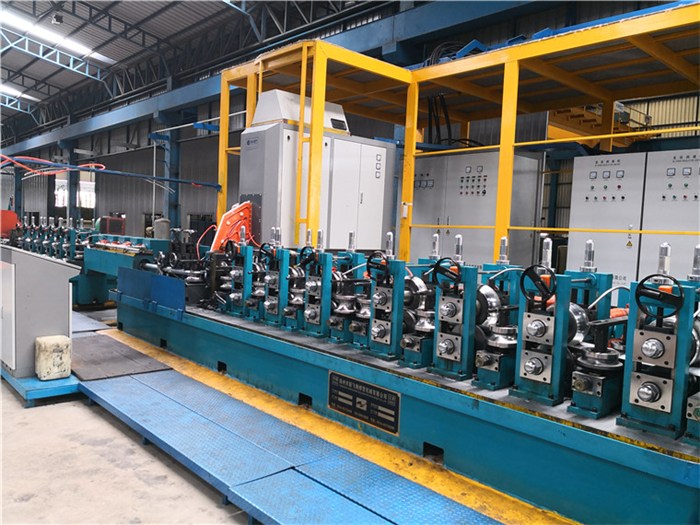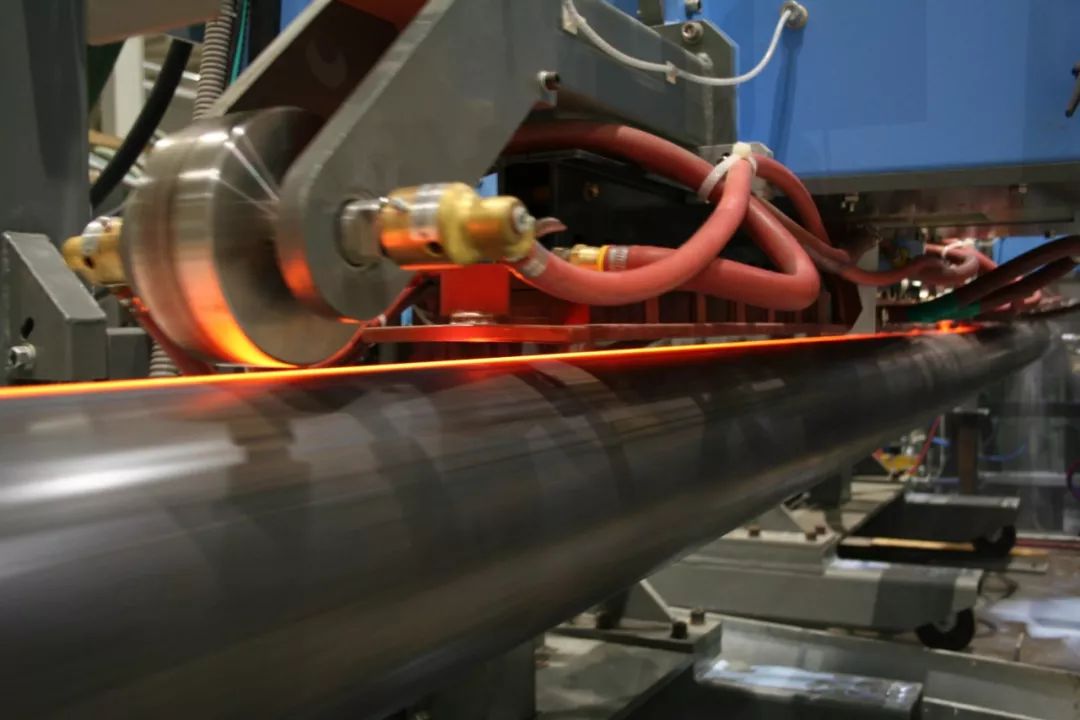How to correctly match used high frequency tube mills is important?
- Sort:Information
- Auth:
- Source:
- Release time:2023-05-29 11:30
- Pvs:
【概要描述】During the whole welding process of the used high frequency tube mills, all the output power of the welder is transmitted to the electromagnetic coil during operation. The working ability of the electromagnetic coil is determined by the impedance (load) of the electromagnetic coil and the larger output voltage and larger output current of the transformer. The ratio of the two is in the middle of the matching decision.
How to correctly match used high frequency tube mills is important?
【概要描述】During the whole welding process of the used high frequency tube mills, all the output power of the welder is transmitted to the electromagnetic coil during operation. The working ability of the electromagnetic coil is determined by the impedance (load) of the electromagnetic coil and the larger output voltage and larger output current of the transformer. The ratio of the two is in the middle of the matching decision.
- Sort:Information
- Auth:
- Source:
- Release time:2023-05-29 11:30
- Pvs:
During the whole welding process of the used high frequency tube mills, all the output power of the welder is transmitted to the electromagnetic coil during operation. The working ability of the electromagnetic coil is determined by the impedance (load) of the electromagnetic coil and the larger output voltage and larger output current of the transformer. The ratio of the two is in the middle of the matching decision.

If this standard value is not adjusted to the same, the output power of the welding machine is unlikely to be completely output to the electromagnetic coil. If the match between the load and the inverter is reduced by 50%, a 400KW welding machine is likely to only transport 200KW to the solenoid coil. In that case, the production speed of the generator set will be lower than the speed that needs to be achieved when the load of the welding machine is completely matched. The main performance is that it can't get up at any speed.
As a part of the common resonance circuit, the electromagnetic coil determines the welding frequency. If the inductance coil specified by the frequency converter is not well matched, a welding machine whose design scheme should be working at 300KHz may only run at 200KHz, because 50% If there is no match, it will seriously harm the quality of the welded pipe.
Why is matching at all output power levels important?
Everyone knows that the production line of the used high frequency tube mills undergoes various load changes during the whole welding process, and the welding quality changes with the change of the load. What everyone needs is constant and stable output, which is a prerequisite for high-quality welding.
In the specific production process, welding rate (speed per hour), welding frequency, welding output power, opening angle size, resistor position, working condition of the resistor, size of magnetic flux, thickness of strip steel, pipe diameter of welded pipe, cooling temperature , Even deburring and the habit of the actual operating staff of different teams all endanger the load matching. Therefore, the continuous maintenance of the best matching is a prerequisite to ensure the consistent welding quality of the welded pipe. All of the above changes in the welded pipe production process will cause changes in the load of the welder, which is why the used high frequency tube mills with automatic matching system software is the best solution to ensure high-quality welding quality. For manufacturers pursuing perfect and high-quality welded pipes, no matter how the production line changes due to external factors (load), the used high frequency tube mills can intelligently enlarge the processing process dialog box, and digest and absorb this according to automatic matching. This load change is the most scientifically researched and simple method.

Can the working voltage inverter welding machine carry out load matching as accurately as the current quantity inverter welding machine?
Most of the working voltage inverter welding machines carry out load matching according to the change of the point contact on the RF transformer. If you want to carry out load matching, you must continue to switch the contacts of the transformer, which is basically unlikely to continue to work on the welding machine. Adjustments are carried out at mid-time.
The welding machine of the current inverter power supply type, according to the automatic matching system software, the load matching is automatically maintained, without the participation of the actual operation staff, the welding machine can carry out the work with the best load matching situation from beginning to end, ensuring a stable welded pipe welding quality.
The Sema Alek rate output power automatic control system (automatically adjusts the power according to the speed of the generator set) and the Sema Alek automatic matching system software (Auto-Match) will automatically correct load changes in all production processes. When the welding machine is working and carrying out load matching, the power and welding frequency can be accurately specified and maintain dynamic maintenance, which will cause calibration when the welding load changes to ensure consistent welding quality.

Why is the welding frequency such a key parameter?
From the development trend of used high frequency tube mills, the frequency up to and down 400KHz has been proven to be the best frequency for the whole process of magnetic induction welding. The welding frequency determines the total width of the strip and the amount of extrusion. This main parameter is all the standard necessary to achieve good welding quality. High frequency can reduce the depth of current penetration. This type of condition is called "Skin Effect". The skin effect causes the heat to be concentrated in the area near the surface of the welding edge, and high-quality forging welding can be achieved with at least the amount of extrusion. Conversely, the low frequency causes a large area of the welding edge to be heated, and if it is more serious, it will lead to aging cast welding. Only the reduction in the total width of commonly used strips has prompted manufacturers to save hundreds of thousands of yuan in raw material costs. The welding frequency and the main parameters of the generator set also affect each other, such as forming, opening angle and other main parameters of hot-rolled strip geometry. In addition, the whole process of high-frequency welding will be more sensitive to the settings of the above main parameters under low-frequency conditions. If the cooperation is not very good, it can lead to a large number of unqualified products and unstable welding quality.

Apart from the main parameters of the mechanical equipment for the development of the motor unit, are there any other items related to the frequency?
The characteristics of the impedance device also depend on the frequency. All resistors are limited to the magnetic flux density in the saturation state, that is to say, the white magnetic flux transmission capacity. If this limit is exceeded, the resistor will stop working. The magnetic flux in the impedance device changes with the frequency. For example, an impeder that is in normal operation will bear twice the magnetic flux in the case of 200KHz than in the case of 400KHz. Reducing the welding frequency is likely to require a large amount of impedance raw materials (magnetic rods). In the case of welding small pipes through thick-walled tubes, due to the limitations of specific indoor space standards, the quality and magnetic flux of the impedance (magnetic rods) Vital.
More News

Time of issue : 2023-10-31

Time of issue : 2023-10-28

Time of issue : 2023-10-25

Time of issue : 2023-10-22
Wechat: 13392281699
Email: zty@usedpipemill.com
Company address:No. A99, East Lecong Avenue, Lecong Town, Foshan City, Guangdong Province
Recommendation
Online Inquiry
LINK
Contact Us
Tel (wechat): 13336487288
Wechat:+86 13336487288
WhatsApp:+86 13336487288
Email: zty@usedpipemill.com
Address: No. A99, Lecong Avenue East, Lecong Town, Foshan City, Guangdong Province










